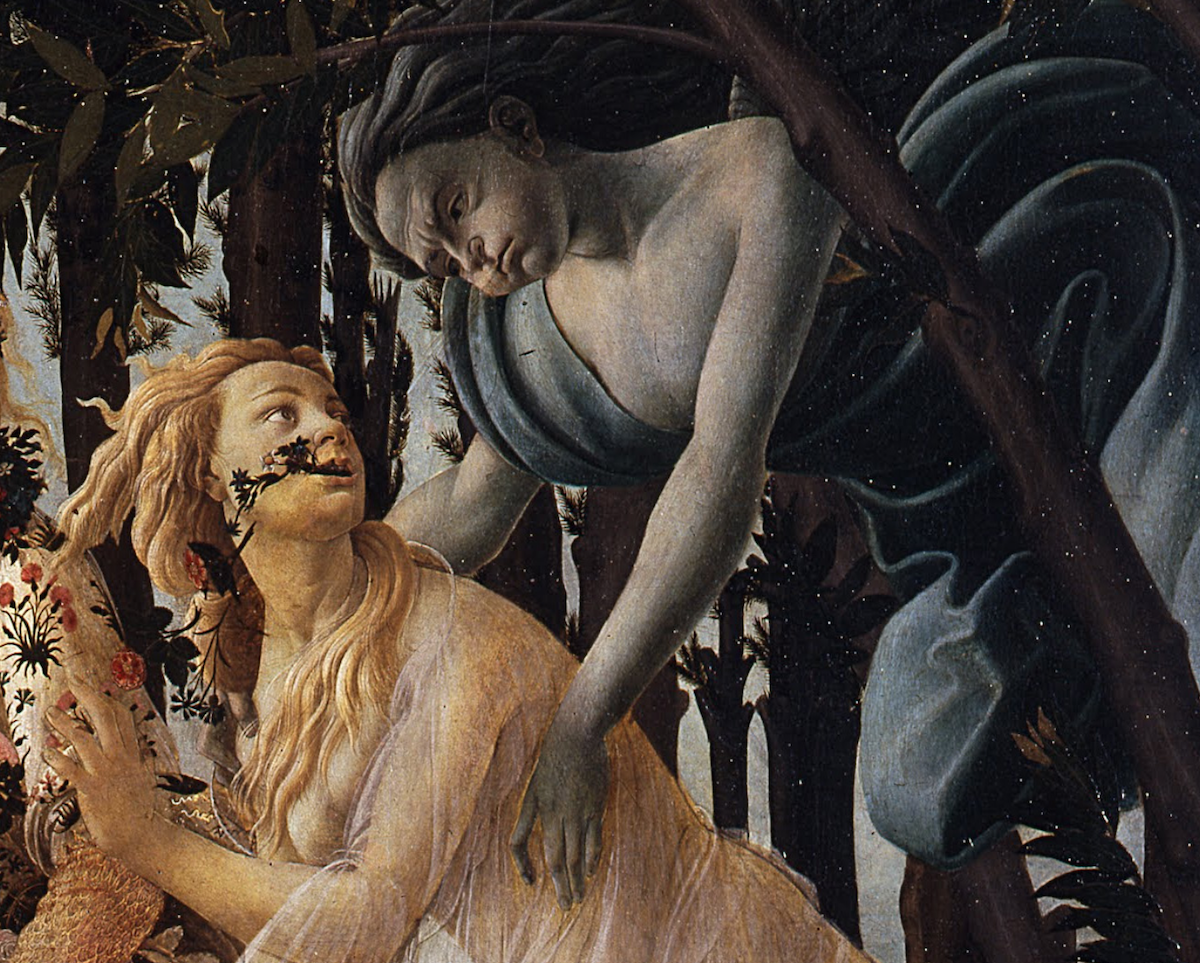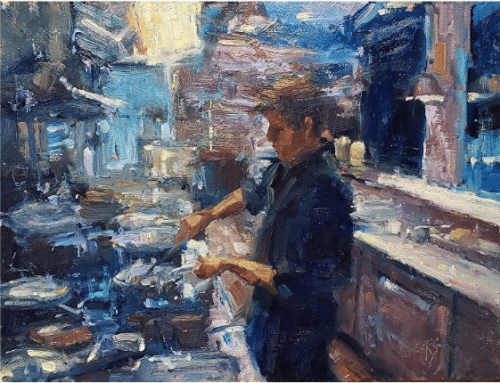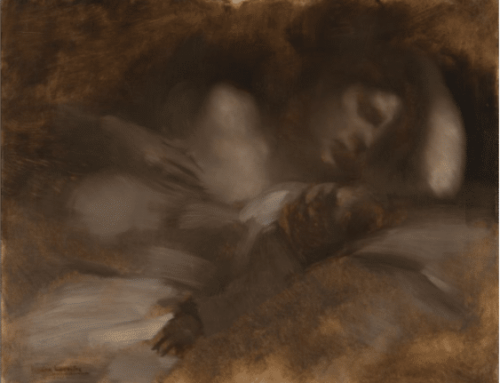“I can live on sunlight falling across little bridges. I can live on …. the pattern of strawberry blossoms and the little daisies in the robe of Primavera.”
~ H.D.Renaissance painter Sandro Botticelli’s La Primavera, the title of which means “Spring” in Italian, perplexes art historians as much as it dazzles audiences of hundreds arriving daily from all over the world to view it along with its equally famous sibling, The Birth of Venus.There are more than 500 species of plants depicted in this bursting depiction of spring flora. Among them are nine mythological figures, placed in the unusual setting of an orange grove (this is explained as a reference to the Medicis, Florence’s powerful family of moneylenders, one of whom it appears commissioned the painting for his bridal chamber).
The picture appears to have multiple references to classical and Renaissance poetry and literature (Ovid, Lucretius, and others), but classical scholars agree there is no single story that unites them.

The central figure, who resembles Venus from The Birth of Venus (no coincidence – the same society girl posed for both) appears pregnant (with spring’s abundance?) yet chaste. This would have been an usual way to represent Venus (and surrounded by a sort of halo of dense leaves, no less).
Some scholars believe the central figure to be “Chasity,” who is modestly turning her gaze away from the scene and toward us. Or gazing across the room, perhaps, where once existed yet another painting created as a partner to this one, Botticelli’s Pallas and the Centaur (1482).

Both Earthly and Divine
The style itself is deliberately outdated, as if belonging to the archaic Gothic Christian fashion, in use before the widespread deployment of pictorial perspective, of which Botticelli was certainly capable. Scholars see an effort here to unite ancient “pagan” antiquity with Renaissance Christianity. The NeoPlatonists of the third century considered Venus the classical embodiment of both earthly and divine love, and therefore a precursor or parallel to the Virgin Mary. Perhaps that’s why “Venus” is dressed in pale gray-blue (Mary’s usual color) as well as red.
It’s generally believed that Venus’ transformation into Mary parallels another metamorphosis happening on the right side of the painting. If the theory’s correct, these strange figures are from the Roman poet Ovid: the nymph Chloris transforms into the Roman folk goddess Flora (symbolizing winter’s transformation into spring) as she flees the grasping blue arms of the winged Zephyrus, personification of the cold March wind. In the Iliad Homer personified the north wind as an impregnator of life |
 |
|
| And then there’s the Three Graces dancing, over there next to Mercury, at the far left. Why these characters? Some see a right-to-left symbolic progression of the season, with Zephyrus of March, followed by Venus, the goddess of April, and finally Mercury, the god of May who’s looking up because he’s banishing the last wisps of chilly spring clouds before the arrival of summer. If that was the intention, though, why tick off the months in reverse order (right to left) instead of in step with linear time (left to right?)
Art historians are quick to admit that some or all of this could be totally off base. After all, no one knows the painting’s official title, if indeed it ever had one. It was art historian Giorgio Vasari, who saw it at Villa Castello just outside Florence in 1550 who called it La Primavera – even though Primavera is not the main character but merely one among many – thus bestowing on the painting the now famous name, under the banner of which scholars speculate to this day. |
|







